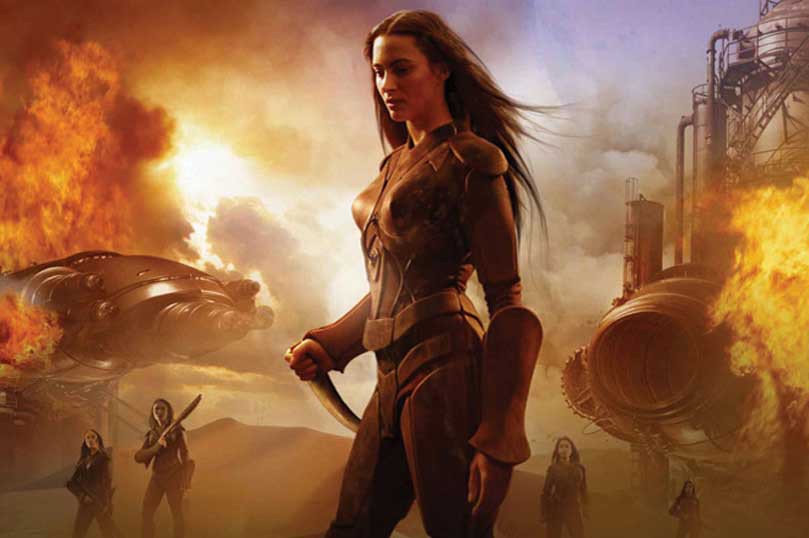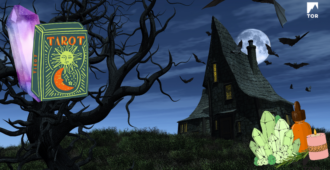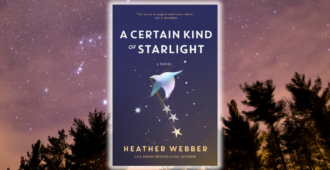 By Brian Herbert and Kevin J. Anderson
By Brian Herbert and Kevin J. Anderson
It’s an old creative-writing class adage, “Write what you know.” For science fiction authors, it’s difficult to “know” a lot about strange, far-flung planets from personal experience, because we can’t go there, except in our research and imaginations. We have developed many exotic settings for Sisterhood Of Dune, Hellhole, and our numerous other novels, and have found that in order to visualize and conceive alien worlds, it helps to visit the interesting parts of this world.
Both of us have traveled extensively, going to the seven continents; to mountains, oceans, jungles, deserts, and ancient ruins; as well as the world’s largest and most interesting cities. Our experiences have provided numerous details that we’ve used for creating even more extreme settings for our novels, both individually and in collaboration.
Even though we write our separate chapters while apart—Brian in Washington State, Kevin in Colorado—we get together for intensive, face-to-face brainstorming to plot out each collaborative novel in detail. Much of our best brainstorming occurs when we are walking in a forest, along an ocean shore, or through a mountain gorge. Restless creative energy has to be released somehow, and when we’re surrounded by spectacular scenery—tall trees, imposing mountains, crashing waves—the big ideas seem to come more readily.
Kevin does most of his writing by dictation, walking miles of hiking trails with a digital recorder and chapter notes. He has climbed numerous 14,000-foot peaks, trudged extensively through Death Valley, the Great Sand Dunes, and the ruined cliff cities in Mesa Verde. While plodding and slipping up a steep, loose slope of sand under a hot summer sun, he can easily imagine a band of Fremen picking their way across the trackless deserts of Dune; while snowshoeing through a blizzard in the Sierra Nevada mountains, Kevin can add vivid details to a scene with characters trying to make their way across the expanse of a glacier on an ice planet.
Brian has circumnavigated the entire world twice and taken numerous additional trips to research unusual and historical locales. On such trips he carries computers, cameras, and recording materials, and comes back with extensive notes, photographs, and other documentation—great raw materials for his writing. In one of his solo science-fiction series, he established a futuristic culture of Venetian-style merchant princes; in a religious thriller, his characters spent time in in Mexico, North Africa, Vatican City, and the Macedonian mountains of Greece. Brian has lived in isolated regions of Mexico and the Hawaiian Islands. He has been to Chile’s remote Robinson Crusoe Island and to far-flung islands in the Indian Ocean, to the dunes of Africa and to the Great Wall of China—and details from his experiences inevitably find their way into his stories.
The desert environments have an obvious connection to the Dune universe, but Arrakis is not the only planet featured in the novels. We can’t visit the vast imperial palace and metropolis on Kaitain, but we can spark our imaginations by seeing the grand architecture of ancient Rome, Istanbul, and the magnificent fortress castles and walled cities of Germany, Spain, France, China, and Japan, while learning about the fascinating rogues who once inhabited those places.
Our stories, like our own lives and experiences, are vivid and eclectic, covering a wide range of subjects and exotic locales, along with intriguing, multi-faceted characters. It is our sincere hope that you are stimulated when you read our novels, just as we have been energized in the creative process.
…………………………
From the Tor/Forge January newsletter. Sign up to receive our newsletter via email.
…………………………
More from our January newsletter:
- Why the Future Never Gets the SF Right by Michael Flynn
- Two sisters, two brothers, and the rebirth of the Deadtime Stories by Annette and Gina Cascone






